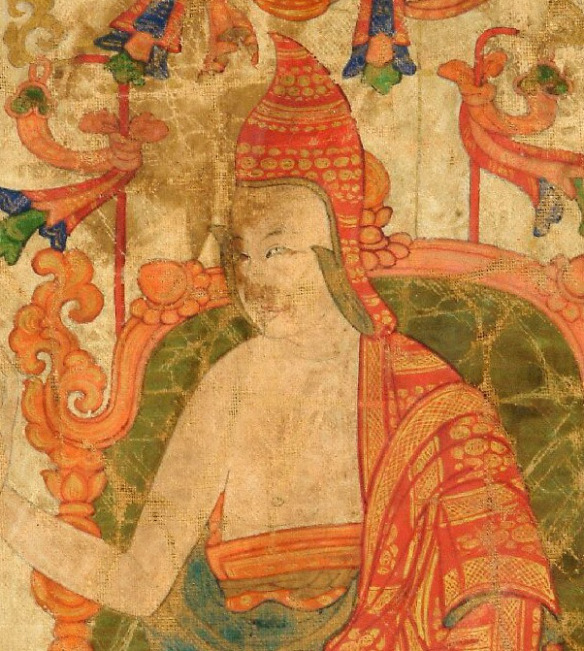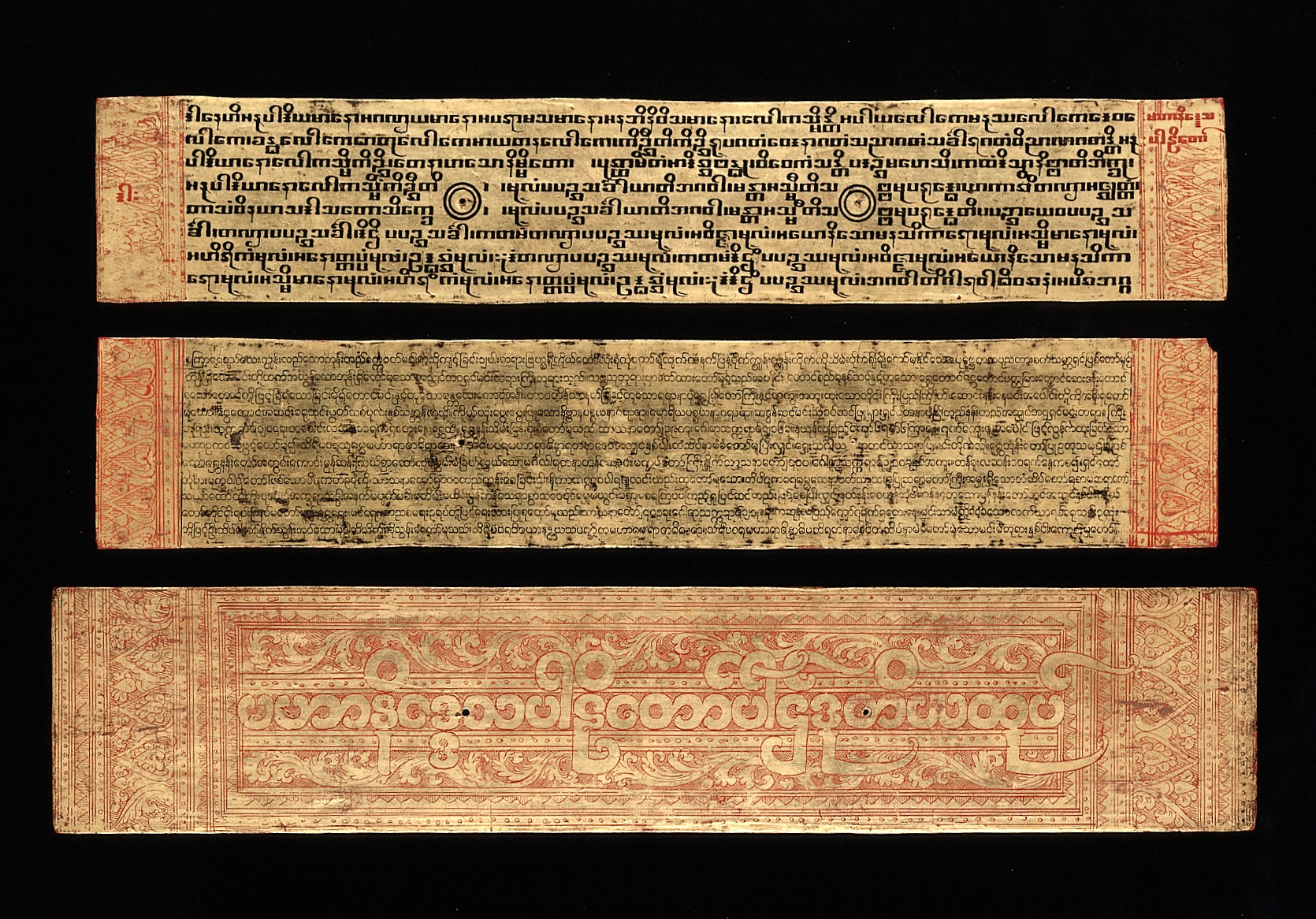|
Shantideva
Shantideva (Sanskrit: Śāntideva; ; ; ; ) was an 8th-century CE Indian philosopher, Buddhist monk, poet, and scholar at the mahavihara of Nalanda. He was an adherent of the Mādhyamaka philosophy of Nāgārjuna. Abhayadatta Sri also lists Shantideva as one of the eighty-four mahasiddhas and is known as Bhusuku Pa (布苏固巴). Two works of Shantideva are extant, the '' Bodhisattvacaryāvatāra'' and the ''Śikṣāsamuccaya'', both of which were written with the intention of being training manuals for one who intends to follow the path of the bodhisattva. The Bodhisattvacaryāvatāra in particular was the subject of both Indian and Tibetan commentaries during the period it was written and has also received large amounts of attention from both academics and lay practitioners in recent years as well including a commentary written by the 14th Dalai Lama. Biography There are two sources of Shantideva's life composed by the Tibetan historians; Buton Rinchen Drub and T ... [...More Info...] [...Related Items...] OR: [Wikipedia] [Google] [Baidu] |
Bodhisattvacaryāvatāra
The ''Bodhisattvacaryāvatāra'' (''Entering the Bodhisattva Conduct'') or ''Bodhicaryāvatāra'' (''Entering the Bodhi'' ''Way''; Tibetan: བྱང་ཆུབ་སེམས་དཔའི་སྤྱོད་པ་ལ་འཇུག་པ་ ''byang chub sems dpa'i spyod pa la 'jug pa;'' Chinese: 入菩薩行論), is a Mahāyāna Buddhist text written c. 700 CE in Sanskrit verse by Shantideva (Śāntideva), a Buddhist monk at Nālandā University in India which is also where it was composed. Structure ''Bodhisattvacaryāvatāra'' has ten chapters dedicated to the development of bodhicitta (the mind of enlightenment) through the practice of the six perfections (''Skt.'' Pāramitās). The text begins with a chapter describing the benefits of the wish to reach enlightenment. The sixth chapter, on the perfection of patient endurance (''Skt.'' ), strongly criticizes anger and has been the subject of recent commentaries by Robert Thurman and the fourteenth Dalai Lama. Tibeta ... [...More Info...] [...Related Items...] OR: [Wikipedia] [Google] [Baidu] |
Madhyamaka
Madhyamaka ("middle way" or "centrism"; ; ; Tibetic languages, Tibetan: དབུ་མ་པ་ ; ''dbu ma pa''), otherwise known as Śūnyavāda ("the Śūnyatā, emptiness doctrine") and Niḥsvabhāvavāda ("the no Svabhava, ''svabhāva'' doctrine"), refers to a tradition of Buddhist philosophy and practice founded by the History of Buddhism in India, Indian Buddhist monk and philosopher Nagarjuna, Nāgārjuna ().Wynne, Alexander (2015) ''Early Buddhist Teaching as Proto-śūnyavāda.'' Journal of the Oxford Centre for Buddhist Studies, 6. pp. 213-241. The foundational text of the Mādhyamaka tradition is Nagarjuna, Nāgārjuna's ''Mūlamadhyamakakārikā'' ("Root Verses on the Middle Way"). More broadly, Madhyamaka also refers to the ultimate nature of phenomena as well as the non-conceptual realization of ultimate reality that is experienced in Buddhist meditation, meditation. Since the 4th century CE onwards, Madhyamaka philosophy had a major influence on the subsequent d ... [...More Info...] [...Related Items...] OR: [Wikipedia] [Google] [Baidu] |
Bodhisattva
In Buddhism, a bodhisattva is a person who has attained, or is striving towards, '' bodhi'' ('awakening', 'enlightenment') or Buddhahood. Often, the term specifically refers to a person who forgoes or delays personal nirvana or ''bodhi'' in order to compassionately help other individuals reach Buddhahood. In the Early Buddhist schools, as well as modern Theravāda Buddhism, bodhisattva (or bodhisatta) refers to someone who has made a resolution to become a Buddha and has also received a confirmation or prediction from a living Buddha that this will come to pass. In Theravāda Buddhism, the bodhisattva is mainly seen as an exceptional and rare individual. Only a few select individuals are ultimately able to become bodhisattvas, such as Maitreya. In Mahāyāna Buddhism, a bodhisattva refers to anyone who has generated '' bodhicitta'', a spontaneous wish and compassionate mind to attain Buddhahood for the benefit of all sentient beings. Mahayana bodhisattvas are spiritua ... [...More Info...] [...Related Items...] OR: [Wikipedia] [Google] [Baidu] |
14th Dalai Lama
The 14th Dalai Lama (born 6 July 1935; full spiritual name: Jetsun Jamphel Ngawang Lobsang Yeshe Tenzin Gyatso, shortened as Tenzin Gyatso; ) is the incumbent Dalai Lama, the highest spiritual leader and head of Tibetan Buddhism. He served as the resident spiritual and temporal leader of Tibet before 1959 and subsequently led the Tibetan government in exile represented by the Central Tibetan Administration in Dharamsala, India. A belief central to the Tibetan Buddhist tradition as well as the institution of the Dalai Lama is that he is a living Bodhisattva, specifically an emanation of Avalokiteśvara (in Sanskrit) or Chenrezig (in Tibetan), the Bodhisattva of Compassion. The Mongolic languages, Mongolic word ''dalai'' means ''ocean.'' He is also known to Tibetans as Gyalwa Rinpoche ("The Precious Jewel-like Buddha-Master"), ''Kundun'' ("The Presence"), and ''Yizhin Norbu'' ("The Wish-Fulfilling Gem"). His devotees, as well as much of the Western world, often call him ''His Ho ... [...More Info...] [...Related Items...] OR: [Wikipedia] [Google] [Baidu] |
Mahayana
Mahāyāna ( ; , , ; ) is a term for a broad group of Buddhist traditions, Buddhist texts#Mahāyāna texts, texts, Buddhist philosophy, philosophies, and practices developed in ancient India ( onwards). It is considered one of the three main existing branches of Buddhism, the others being Theravāda and Vajrayāna.Harvey (2013), p. 189. Mahāyāna accepts the main scriptures and teachings of Early Buddhist schools, early Buddhism but also recognizes various doctrines and texts that are not accepted by Theravada Buddhism as original. These include the Mahāyāna sūtras and their emphasis on the ''bodhisattva'' path and Prajnaparamita, ''Prajñāpāramitā''. Vajrayāna or Mantra traditions are a subset of Mahāyāna which makes use of numerous Tantra, tantric methods Vajrayānists consider to help achieve Buddhahood. Mahāyāna also refers to the path of the bodhisattva striving to become a fully awakened Buddha for the benefit of all sentience, sentient beings, and is thus also ... [...More Info...] [...Related Items...] OR: [Wikipedia] [Google] [Baidu] |
Samadhiraja Sutra
Nara. Candraprabha is the Buddha's main interlocutor in the ''Candrapradīpa.'' The ''Samādhirāja Sūtra'' (''King of Samādhis Sūtra'') or ''Candrapradīpa Sūtra'' (''Moonlamp Sūtra'') is a Buddhist Mahayana sutras, Mahayana sutra. Some scholars have dated its redaction from the 2nd or 3rd century CE to the 6th century (the date of the earliest manuscript found), but others argue that its date just cannot be determined. The ''Samādhirāja'' is a very important source for the Madhyamaka school and it is cited by numerous Indian authors like Chandrakirti, Shantideva and later Buddhist authors.Regamey, Constantin (1938). ''Philosophy in the Samādhirājasūtra: Three Chapters From the Samādhirājasūtra,'' p. 3. Motilal Banarsidass Publishers. According to Alex Wayman, the ''Samādhirāja'' is "perhaps the most important scriptural source for the Madhyamika."Tatz, Mark (1972). ''Revelation in Madhyamika Buddhism,'' p. 4. M.A.Thesis, University of Washington. The ''Samādhi ... [...More Info...] [...Related Items...] OR: [Wikipedia] [Google] [Baidu] |
Nalanda
Nalanda (International Alphabet of Sanskrit Transliteration, IAST: , ) was a renowned Buddhism, Buddhist ''mahavihara'' (great monastery) in medieval Magadha (Mahajanapada), Magadha (modern-day Bihar), eastern India. Widely considered to be among the greatest Ancient higher-learning institutions, centres of learning in the ancient world and often referred to as "the world's first residential university", it was located near the city of Rajagriha (now Rajgir), roughly southeast of Pataliputra (now Patna). Operating for almost a thousand years from 427 CE until around 1400 CE, Nalanda mahavihara played a vital role in promoting the patronage of arts, culture and academics during the 5th and 6th century CE, a period that has since been described as the "Golden Age of India" by scholars. Nalanda was established by emperor Kumaragupta I of the Gupta Empire around 427 CE, and was supported by numerous Indian and Javanese patrons – both Buddhists and non-Buddhists. Nalanda continue ... [...More Info...] [...Related Items...] OR: [Wikipedia] [Google] [Baidu] |
Buddhism
Buddhism, also known as Buddhadharma and Dharmavinaya, is an Indian religion and List of philosophies, philosophical tradition based on Pre-sectarian Buddhism, teachings attributed to the Buddha, a wandering teacher who lived in the 6th or 5th century Before the Common Era, BCE. It is the Major religious groups, world's fourth-largest religion, with about 500 million followers, known as Buddhists, who comprise four percent of the global population. It arose in the eastern Gangetic plain as a movement in the 5th century BCE, and gradually spread throughout much of Asia. Buddhism has subsequently played a major role in Asian culture and spirituality, eventually spreading to Western world, the West in the 20th century. According to tradition, the Buddha instructed his followers in a path of bhavana, development which leads to Enlightenment in Buddhism, awakening and moksha, full liberation from ''Duḥkha, dukkha'' (). He regarded this path as a Middle Way between extremes su ... [...More Info...] [...Related Items...] OR: [Wikipedia] [Google] [Baidu] |
Buddhavacana
Buddhist texts are religious texts that belong to, or are associated with, Buddhism and Schools of Buddhism, its traditions. There is no single textual collection for all of Buddhism. Instead, there are three main Buddhist Canons: the Pāli Canon of the Theravada, Theravāda tradition, the Chinese Buddhist canon, Chinese Buddhist Canon used in East Asian Buddhism, East Asian Buddhist tradition, and the Tibetan Buddhist canon, Tibetan Buddhist Canon used in Tibetan Buddhism, Indo-Tibetan Buddhism. The earliest Buddhist texts were not committed to writing until some centuries after the death of Gautama Buddha. The oldest surviving Buddhist manuscripts are the Gandhāran Buddhist texts, found in Pakistan and written in Gāndhārī language, Gāndhārī, they date from the first century BCE to the third century CE. The Early Buddhist texts, first Buddhist texts were initially passed on orally by Buddhist monasticism, Buddhist monastics, but were later written down and composed ... [...More Info...] [...Related Items...] OR: [Wikipedia] [Google] [Baidu] |
Nagarjuna
Nāgārjuna (Sanskrit: नागार्जुन, ''Nāgārjuna''; ) was an Indian monk and Mahayana, Mahāyāna Buddhist Philosophy, philosopher of the Madhyamaka (Centrism, Middle Way) school. He is widely considered one of the most important Buddhist philosophers.Garfield, Jay L. (1995), ''The Fundamental Wisdom of the Middle Way'', Oxford: Oxford University Press. Nāgārjuna is widely considered to be the founder of the Madhyamaka school of Buddhist philosophy and a defender of the Mahāyāna movement. His ''Mūlamadhyamakakārikā'' (''Root Verses on Madhyamaka'', MMK) is the most important text on the Madhyamaka philosophy of Śūnyatā, emptiness. The MMK inspired a large number of commentaries in Sanskrit, Chinese, Tibetan, Korean and Japanese and continues to be studied today. History Background India in the first and second centuries CE was politically divided into various states, including the Kushan Empire and the Satavahana dynasty, Satavahana Kingdom. At ... [...More Info...] [...Related Items...] OR: [Wikipedia] [Google] [Baidu] |
Mahasiddhas
Mahasiddha (Sanskrit: ''mahāsiddha'' "great adept; ) is a term for someone who embodies and cultivates the "siddhi of perfection". A siddha is an individual who, through the practice of sādhanā, attains the realization of siddhis, psychic and spiritual abilities and powers. Mahasiddhas were practitioners of yoga and tantra, or ''tantrika''s. Their historical influence throughout the Indian subcontinent and the Himalayas was vast and they reached mythic proportions as codified in their songs of realization and hagiographies, or namtars, many of which have been preserved in the Tibetan Buddhist canon. The Mahasiddhas are identified as founders of Vajrayana traditions and lineages such as Dzogchen and Mahamudra, as well as among Bön, Nāth, and Tamil siddhars, with the same Mahasiddha sometimes serving simultaneously as a founding figure for different traditions. Robert Thurman explains the symbiotic relationship between Tantric Buddhist communities and the Buddhist un ... [...More Info...] [...Related Items...] OR: [Wikipedia] [Google] [Baidu] |








